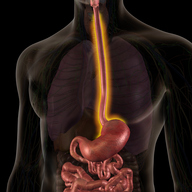A novel method to generate stratified esophageal epithelium in 2D
TECHNOLOGY NUMBER: 2023-006

OVERVIEW
Successful mapping of epithelial cells from adult human esophagus- Formation of two- and three-dimensional organoids for use in modeling
- Establishment of an ancestrally diverse biobank of in vitro esophagus tissue
BACKGROUND
The esophagus connects the upper pharynx with the stomach and is lined by a stratified squamous epithelium. Esophageal diseases can arise during embryological development or throughout life if the organ undergoes injury or inflammation. Adults may suffer illnesses such as eosinophilic esophagitis, metaplasia of the distal esophagus, and squamous cell or adenocarcinomas. The normal epithelial lining of the esophagus transitions from a pseudo stratified epithelium during early-life development into a fully stratified epithelium in adults. Histologic evaluation of normal adult esophageal tissue as well as studies of single esophageal cells have identified several distinct types of epithelia. Therefore, additional well-characterized in vitro models and detailed methods are needed to describe, characterize, and understand the healthy esophagus during homeostasis to treat the diseases it suffers.
INNOVATION
Researchers at the University of Michigan have mapped epithelial cells from the adult human esophagus and demonstrate that two-dimensional and three-dimensional organoids can be employed for modeling the complete epithelial layers, thereby enabling in vitro modeling of the human adult esophagus. The investigators created a single-cell RNA sequencing (scRNA-seq) reference atlas of the cell types observed in the normal adult human esophagus, they established an ancestrally diverse biobank of in vitro esophagus tissue to interrogate homeostasis and injury, and they benchmarked those in vitro motels using the atlas. They were able to identify and validate several transcriptionally distinct cell classes in the native human adult esophagus, with four populations belonging to the epithelial layer, including basal, epibasal, early differentiating, and terminally differentiated-luminal cells.
Given that multiple pediatric and adult esophageal diseases are known to exhibit gender and racial disparities in their incidence and presentation, the scientists have begun to develop a biobank of esophageal cell lines from across the diversity of the human population and from a wide range of healthy and diseased states. These cell lines will provide a means to better understand how genetic differences and ancestry may play a role in injury-repair or disease. This novel approach therefore provides detailed methods for the long-term culture of the human esophagus in vitro, provides an atlas of the adult human esophagus, and uses scRNA-seq data as a roadmap to benchmark in vitro cultured cells providing a detailed foundation for pursuing human esophagus research.